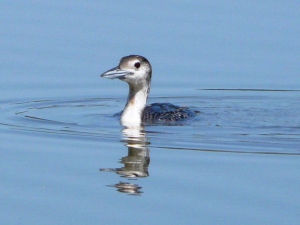“You should have been here yesterday.” That’s how my trip in April started out. Two friends and I drove from North Carolina to Dauphin Island, Alabama, and High Island, Texas, before meeting the rest of our group near San Antonio. I learned that hot spots aren’t hot every day, even at the right time of the year.
I don’t have much to say about Dauphin Island except that it did provide my best view ever of a very beautiful Kentucky Warbler. We also saw so many Prothonotary Warblers that they almost became trash birds. And, take your own food! Perhaps being there Easter weekend didn’t contribute to the availability of dining options, but it was so bad that the last night we voted for the hamburgers at the gas station as our best bet for dinner.
At High Island, the bird story was similar to Dauphin Island; we missed the big days before and after our visit. But High Island did give me my first life bird of the trip, a very cooperative Swainson’s Warbler. On our first morning at Boy Scout Woods, I asked about finding the warbler and headed in the direction where one had been seen the day before. After searching a short time, I noticed two men intently peering into the thick underbrush. I knew that they were looking at a Swainson’s Warbler. I slowly walked over to the men; they warmly greeted me and then showed me where the warbler was turning over leaves on the ground. Over the next 20 minutes, a crowd of 10 or so slowly gathered and our local expert did not leave until he was sure that every person there had seen the Swainson’s Warbler.
A rookery is an amazing place with hundreds of birds packed in so tightly that they almost step on each other. I took the photo at the top of this post at The Rookery at Smith Oaks in High Island. At the time of our visit, nesting birds were predominately Roseate Spoonbills and Neotropic Cormorants with a few Great and Snowy Egrets. The Roseate Spoonbills were dazzling with their deep pink shoulders, orange tail, and tuft of pink feathers in the center of their breasts.
Do you remember Dreamsicles? My friend Susan describes the color of American Avocets in breeding plumage as deamsicle. The thousand plus Avocets we discovered at Bollivar Flats looked like a colorful sea of dreamsicle, black and white. What an awesome moment it was to soak in all that beauty and see one of our favorite birds doing so well that they could congregate in groups of thousands. I have since learned that the American Avocet does indeed have a NatureServe conservation status of G5 (secure) and an IUCN (International Union for Conservation of Nature) status of Least Concern. The global population is estimated at 450,000 adults.
Attwater Prairie Chicken National Wildlife Refuge provided a wonderful break on our drive to meet the rest of our group. We had only a couple of hours to spare, but could easily have spent an entire day there. Everything was wonderful – the habitat, birds, butterflies, flowers, visitor’s center. During our short visit, we were pleased to see the only White-tailed Hawk of the trip, a close-up Crested Caracara, Loggerhead Shrike and Scissor-tailed Flycatchers along with ducks, waders, and meadowlarks. We all noted Attwater NWR as a place we would like to visit again as we headed west to continue our Texas adventure.






